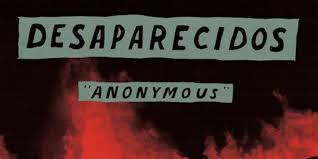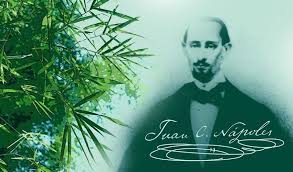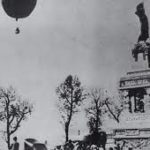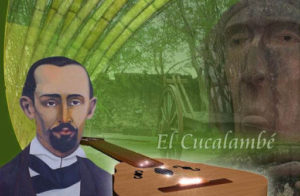 CUBA, PEOPLE MISSING IN OUR HISTORY .. WITHOUT LEAVING A TRACE.
CUBA, PEOPLE MISSING IN OUR HISTORY .. WITHOUT LEAVING A TRACE.
There are memories from many years in our history of people who have disappeared forever and without a trace.
MATIAS PÉREZ AND HIS AIR BALLOON.
June 28 is the anniversary of the disappearance of Matías Pérez, that Portuguese man living in Havana and by profession, who flew up on that day to star in the most spectacular of the ascents that have taken place in Cuba. In his hot air balloon, which he christened La Villa de París, Matías Pérez rose until he disappeared before the gaze of thousands of spectators who waited in vain for his return. The search that the authorities undertook to find him was unsuccessful.
With his disappearance, the Portuguese were forever installed in the popular Cuban imagination. In everyday talk, the phrase “He flew like Matías Pérez” alludes to someone who disappears without leaving a trace and should not be counted on their return.
JUAN NAPOLES AND FAJARDO “EL CUCALAMBE”.
Another illustrious disappeared in Cuba is the Cucalambé. Juan Napoles and Fajardo. If in the poetry of the nineteenth century Cuban, Manzano is the slave and Heredia, the exile, Naples Fajardo is the disappeared. In 1862, the man who had made the pseudonym of El Cucalambé famous and who was already enjoying enormous popularity for his verses, disappeared forever and conjectures about his disappearance continue to this day. He was 33 years old then. He achieved in his tenths the transcript of the local color and consubstanced the desires and feelings of the Cuban peasant. Hence the never-exhausted popularity of his verses, which many memorize from so much that they heard them repeated, without having read them and sometimes without being able to specify who wrote them.
Between 1848 and 1852 the poet participated in various conspiracies against Spain. Later he married, had two children, and in the city of Santiago de Cuba accepted a position in the colonial administration. Life seemed to smile at him, but, strong and haughty as he was, he was annoyed by the criticisms of his former colleagues who reproached him for having admitted a job to the government. The first war of independence would soon break out with all its storms and El Cucalambé was undoubtedly experiencing its own internal tempest. Although some claim that perhaps the most recalcitrant Spanish element took him out of the way, murdering him, the most widely accepted hypothesis is that of suicide.
THE ABAKUA ANDRÉ PETIT ‘QUIMBISA’.
Another no less illustrious disappeared is the Abakuá André Petit, also called Andrés Quimbisa, Cristo Facundo de los Dolores or El Caballero de Color. Undoubtedly, one of the least known Havanans of the 19th century, founder, in 1857, of a ñáñiga powerhouse for whites, known as Quimbisa Rule, which was baptized in 1863 as Bacocó Efór.
In Rome, it is said, André Petit spoke privately with the Pope. It was from there that Petit introduced the crucifix into the ñáñigo cult and created the Plaza de Abasí, as a symbol of the Christian God. The Havana Abakuás, aware of Petit’s agreements with the head of the Catholic Church and dissatisfied with the reforms that threatened to invade a land previously reserved for blacks and mulattos, waited, with a threatening attitude, for Petit’s arrival in the Havana port. Petit noticed from the ship the aggressiveness of those who were waiting for him and just by raising his staff he reassured the conspirators. It was his great triumph because Petit’s initiative contributed to the integration of the Cuban nation and to link blacks, whites, and mulattoes in the same set of beliefs, rites, and solidarity, which is why ñañiguismo went from a “black issue” to being Cuban thing.
Andrés Petit passed away at 48 years of age. It is not known what was the cause of death, or where his remains rest. His portrait presides over many house-temples, where the devotees place flowers: twelve white flowers with a black prince. His staff passed into the hands of Fernando Ortiz. Hence, for a long time, it was said that Don Fernando was the man who had the most clarity in Cuba.
 CUBA, DESPARECIDOS EN NUESTRA HISTORIA.. SIN DEJAR RASTRO.
CUBA, DESPARECIDOS EN NUESTRA HISTORIA.. SIN DEJAR RASTRO.
Hay recuerdos desde muchos años en nuestra historia de gente que ha desaparecido para siempre y sin dejar rastro.
Un 28 de junio es el aniversario de la desaparición de Matías Pérez, aquel portugués avecindado en La Habana y toldero de profesión, que en ese día remontó vuelo para protagonizar la más espectacular de las ascensiones que han tenido lugar en Cuba. En su globo aerostático, que bautizó como La Villa de París, Matías Pérez se elevó hasta desaparecer ante la mirada de miles de espectadores que esperaron en vano su regreso. Fue infructuosa la búsqueda que acometieron las autoridades para encontrarlo.
Con su desaparición, el portugués quedó instalado para siempre en el imaginario popular cubano. En el hablar de todos los días, la frase “Voló como Matías Pérez” alude a quien desaparece sin dejar rastro y no debe contarse con su regreso.
JUAN NAPOLES Y FAJARDO “EL CUCALAMBE”.
Otro desaparecido ilustre en Cuba es el Cucalambé. Juan Nápoles y Fajardo. Si en la poesía del siglo XIX cubano, Manzano es el esclavo y Heredia, el desterrado, Nápoles Fajardo es el desaparecido. En 1862, el hombre que había hecho célebre el seudónimo de El Cucalambé y que gozaba ya de una popularidad enorme por sus versos, desapareció para siempre y hasta hoy llegan las conjeturas sobre su desaparición. Tenía 33 años de edad entonces. Logró en sus décimas el trasunto del color local, y consustanció anhelos y sentimientos del guajiro cubano. De ahí la nunca agotada popularidad de sus versos, que muchos memorizan de tanto que los oyeron repetir, sin haberlos leído y a veces sin poder precisar quién los escribió.
Entre 1848 y 1852 participó el poeta en varias conspiraciones contra España. Luego contrajo matrimonio, tuvo dos hijos y en la ciudad de Santiago de Cuba aceptó un puesto en la administración colonial. La vida parecía sonreírle, pero, recio y altivo como era, le molestaban las críticas de sus antiguos compañeros que le reprochaban el haberle admitido empleo al gobierno. La primera guerra de independencia no tardaría en estallar con todas sus tempestades y El Cucalambé vivía sin duda su propia tempestad interna. Aunque algunos afirman que tal vez el elemento español más recalcitrante se lo quitó del medio, asesinándolo, la hipótesis más aceptada es la del suicidio.
EL ABAKUA ANDRÉ PETIT ‘QUIMBISA’.
Otro desaparecido no menos ilustre es el abakuá André Petit, llamado también Andrés Quimbisa, Cristo Facundo de los Dolores o El Caballero de Color. Sin duda, uno de los habaneros menos conocidos del siglo XIX, fundador, en 1857, de una potencia ñáñiga para blancos, conocida como Regla Quimbisa y que fuera bautizada en 1863 como Bacocó Efór.
En Roma, se dice, André Petit conversó en privado con el Papa. Fue a partir de ahí que Petit introdujo el crucifijo en el culto ñáñigo y creó la plaza de Abasí, como símbolo del Dios cristiano. Los abakuás habaneros, enterados de los acuerdos de Petit con el jefe de la Iglesia Católica y descontentos con las reformas que amenazaban con invadir un terreno hasta entonces reservado para negros y mulatos, aguardaron, con actitud amenazante, la llegada de Petit en el puerto habanero. Petit advirtió desde el barco la agresividad de los que lo esperaban y con solo levantar su báculo tranquilizó a los conjurados. Fue su gran triunfo porque la iniciativa de Petit contribuyó a la integración de la nación cubana y a enlazar a negros, blancos y mulatos en un mismo conjunto de creencias, ritos y solidaridades por lo que el ñañiguismo pasó de “asunto de negros”, a ser cosa de cubanos.
Andrés Petit falleció a los 48 años de edad. No se sabe cuál fue la causa de la muerte, ni lugar donde descansan sus restos. Su retrato preside muchas casas-templos, donde los devotos colocan flores: doce flores blancas con un príncipe negro. Su báculo pasó a manos de Fernando Ortiz. De ahí que durante mucho tiempo se dijera que don Fernando era el hombre que más claridad tenía en Cuba.
Agencies/ CiroBianchi/ RHC/ Extractos/ Excerpts/ Internet Photos/ Arnoldo Varona/ www.TheCubanHistory.com
THE CUBAN HISTORY, HOLLYWOOD.



 CUBA, People Missing in Our History.. without Leaving a Trace. * CUBA, Personas Desaparecidas en Nuestra Historia.. Sin Dejar Rastro. PHOTOS.
CUBA, People Missing in Our History.. without Leaving a Trace. * CUBA, Personas Desaparecidas en Nuestra Historia.. Sin Dejar Rastro. PHOTOS.








